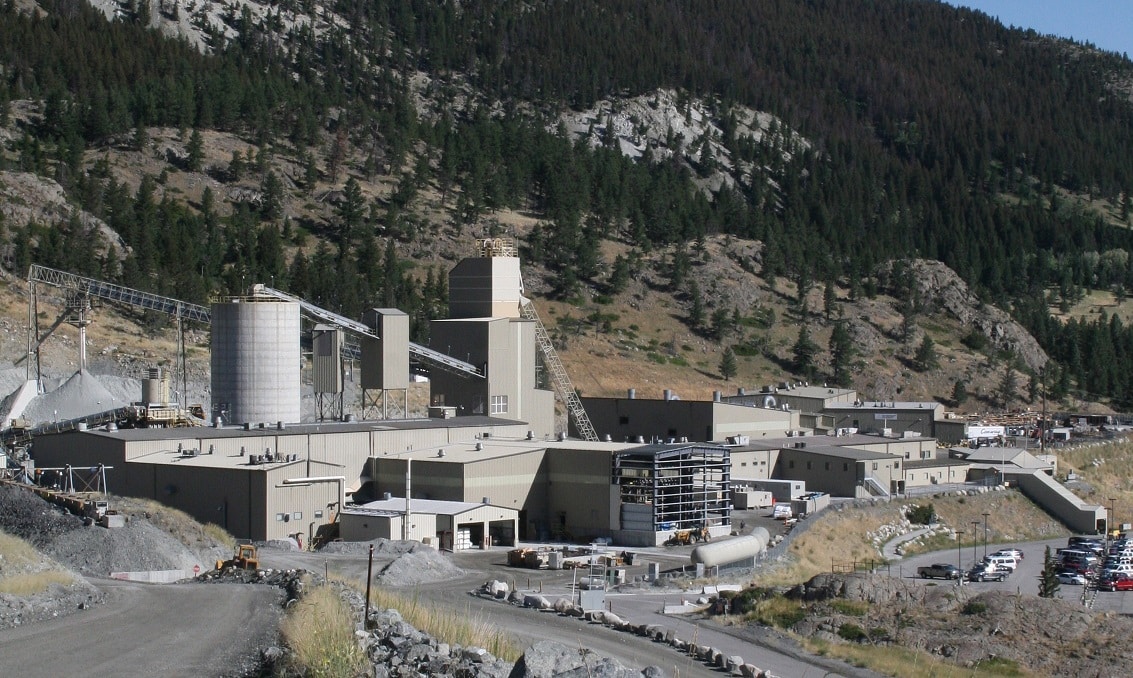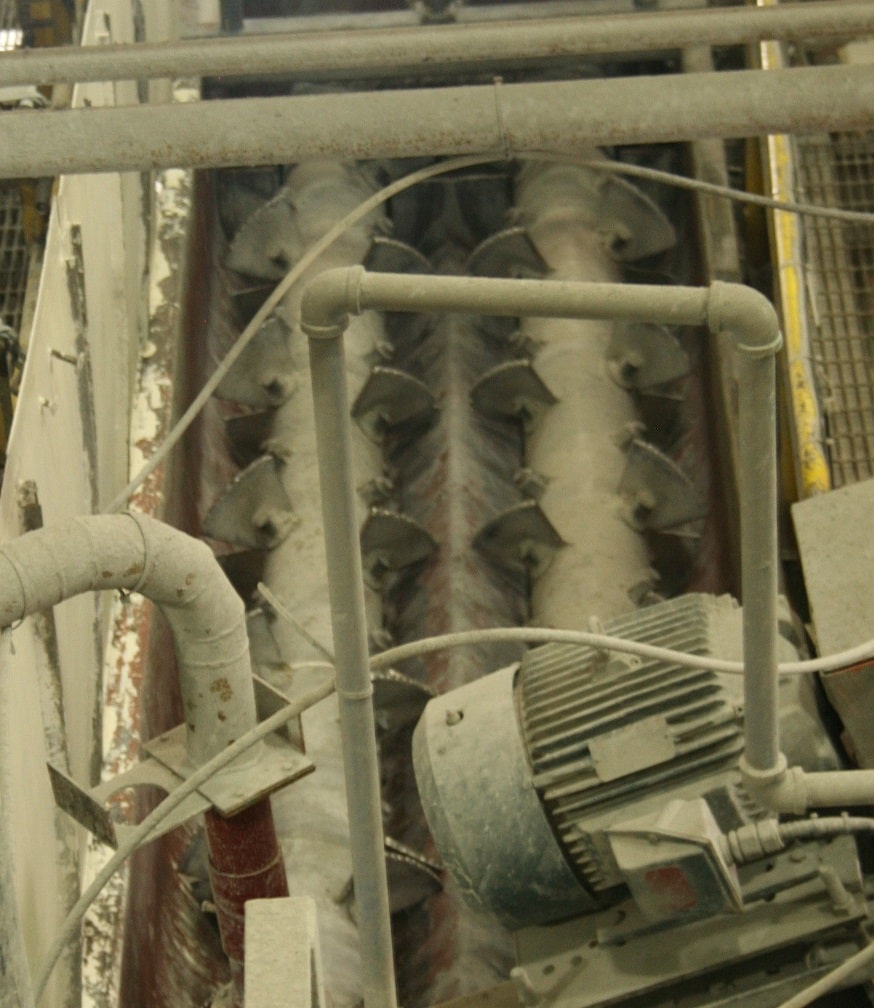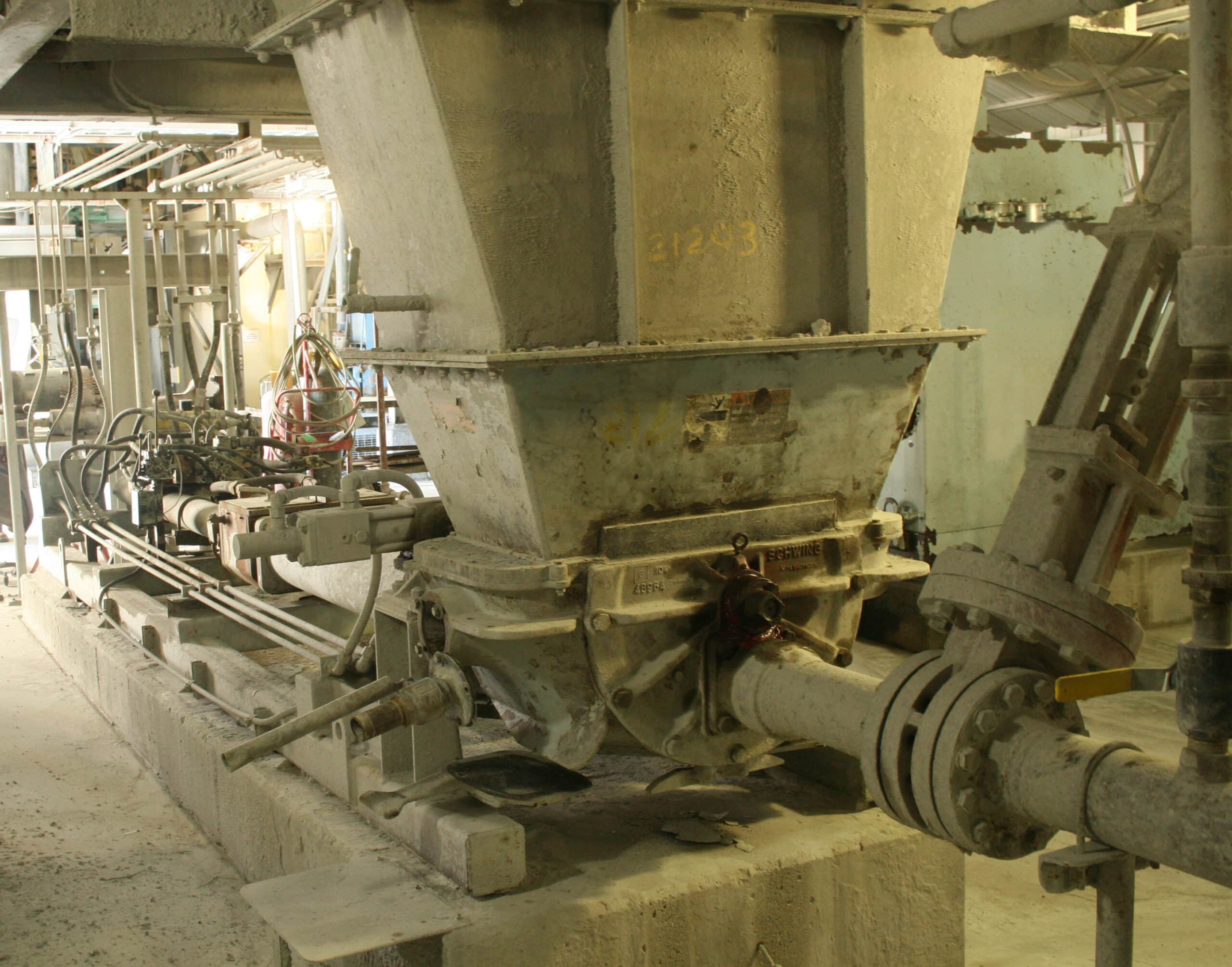As a recognized leader in the Mining Industry, Schwing Bioset, Inc. (SBI) provides Mining Pumps designed for paste, thickened tailings, slimes, and any other high solids slurries, pumping application. Delivering dependable service day after day in underground and surface operations, SBI pumps are known to stand up to the harshest of site conditions, proven by the many years of reliable operation in surface and underground mines around the world. Check out this throw-back article to discover more about how a Schwing Bioset system can help solve your plant’s most challenging issues.
 Prior to the early 1980s, if poor soil conditions prevented a mining operation from safely accessing a rich vein of ore, that company had little recourse but to abandon the area in question and lose the ore contained within. It was generally accepted as a costly but unavoidable facet of the business. Today, however, techniques such as underhand cut and fill mining, in which cemented mill tailings are used to backfill the mined-out stope, allowing subsequent stopes to be cut beneath previously mined areas, have established themselves as a viable alternatives for working in such conditions. While not as frequently relied upon—due in large part to the added costs associated with it—underhand cut and fill has proven to be a valuable method and found its way into mainstream mining practices. As a result, many companies are pulling high quality ore from areas once viewed as unreachable. One of those, Montana’s Stillwater Mining Company, has been successfully employing that approach for more than a decade now and, with the help of a KSP 80H(K)R pump from Schwing Bioset to deliver the paste for that process, has literally “gone where no man has gone before.”
Prior to the early 1980s, if poor soil conditions prevented a mining operation from safely accessing a rich vein of ore, that company had little recourse but to abandon the area in question and lose the ore contained within. It was generally accepted as a costly but unavoidable facet of the business. Today, however, techniques such as underhand cut and fill mining, in which cemented mill tailings are used to backfill the mined-out stope, allowing subsequent stopes to be cut beneath previously mined areas, have established themselves as a viable alternatives for working in such conditions. While not as frequently relied upon—due in large part to the added costs associated with it—underhand cut and fill has proven to be a valuable method and found its way into mainstream mining practices. As a result, many companies are pulling high quality ore from areas once viewed as unreachable. One of those, Montana’s Stillwater Mining Company, has been successfully employing that approach for more than a decade now and, with the help of a KSP 80H(K)R pump from Schwing Bioset to deliver the paste for that process, has literally “gone where no man has gone before.”
Big Sky Mining
 Working a geological formation in southern Montana known as the J-M Reef, Stillwater Mining Company extracts, processes, smelts, refines, and markets palladium and platinum, as well as a limited amount of copper, silver, rhodium, and gold. Located at the foothills of the Beartooth Mountains in southern Montana, the area represents the only known considerable source of platinum group metals in the United States, and is one of the most significant sources outside Russia and South Africa.
Working a geological formation in southern Montana known as the J-M Reef, Stillwater Mining Company extracts, processes, smelts, refines, and markets palladium and platinum, as well as a limited amount of copper, silver, rhodium, and gold. Located at the foothills of the Beartooth Mountains in southern Montana, the area represents the only known considerable source of platinum group metals in the United States, and is one of the most significant sources outside Russia and South Africa.
While only a few hundred tonnes are produced annually, platinum group ores are generally used for catalytic converters in cars, jewelry, and even dentistry equipment. According to Wayne Fallis, Stillwater’s Stationary Equipment Maintenance Planner, the ore is mined, crushed fine, and then run through a flotation process. During the flotation process the metals are skimmed off and excess water is removed.
“At that point, it is concentrated to about 30 to 35% metals but there is still a good deal of dirt and rock contained within,” he says. “So it is sent to a refinery where it is run through a flash furnace to remove the base metals, leaving a finished mineral product. The tailings from that initial extraction process are routed to the paste plant where, after processing, they will eventually become the mixture used in the backfilling process.”
To make that paste happen, the mill tailings are first mixed with a flocculent to settle out the silt-sized fines (called slimes). Excess water is extracted and the residual material is pumped up and onto the belt of the vacuum filter to a depth of about ¾-inch where even more water is removed.
“The filter is critical in that it not only further reduces water content, it also removes the slimes that were not taken in suspension,” says Fallis. “This is important because slimes can have an adverse effect on the final product by reducing the paste’s strength when the cement is setting up; that simply can’t be allowed. By the time material gets to the end of the belt it is fairly dry: water contents are generally only about 18 – 20%. We then send it to a pug mill where the cement and any additives are mixed. When it drops out the other end it is finished product: paste ready to be pumped to a waiting stope.”
Long Way to Go
Where that stope will be depends, of course, on a host of factors. But, as mentioned, it will generally be in an area with poor soil conditions — areas prone to rockbursts, for example. Stillwater’s Mine Engineer, John Marjerison, says the decision to go with underhand cut and fill starts with the initial core sample.
“If we do the diamond drilling and geotech assessment and the core shows the ground to be very poor quality, we might decide that we have to take our licks on the first cut and really over-support that rock. In some instances we might even be shotcreting on the way in. Once we get that first cut done and backfilled with paste, however, we know what our back integrity is because we already know what that paste strength is.”
At Stillwater, the distance to the stope being backfilled can be (and has been) greater than 7,000 feet. To move the paste that distance, the company installed a KSP 80 pump from Schwing Bioset (Somerset, WI) powered by twin 150 hp electric motors back in 1998. Marjerison says that, despite the relatively limited role underhand mining plays in Stillwater’s everyday operation—it is used for roughly 10% of the stope backfilling—the pump is the ideal tool for the job.
“To move a material with a high solids content that distance would be a challenge for any piece of equipment,” he says. “Granted, in many of the deeper stopes, the material has gravity helping it out. However, that’s not always the case; we’ve pumped some really long distances without much of a vertical drop at all. But the combination of the stoutness of the pump and our efforts to produce a nice consistent product out of the mixer has really paid off. When needed, we’ve been getting steady pour rates in the 90 ton-an-hour range and holding to that rate for 6-hour, 12-hour, even 18-hour continuous pours. We’ve been very pleased with that level of performance.”
Designed for Strength
 The mix design at Stillwater to which Marjerison refers, includes a 10–12% cement content and a Euco-Fill 31 water reducing and plasticizing admixture that develops 586 kPa (85 psi) of unconfined compressive strength (UCS) after seven days. Though lower in strength than paste used at other comparable mines also doing paste backfilling (a result of the large amount of -44 micron [-325 mesh] particles in the mill tailings), the company benefits by being able to reduce velocity in the pipelines to about 0.64 m/sec (2.1 ft/sec), less than one-third that of the other mines.
The mix design at Stillwater to which Marjerison refers, includes a 10–12% cement content and a Euco-Fill 31 water reducing and plasticizing admixture that develops 586 kPa (85 psi) of unconfined compressive strength (UCS) after seven days. Though lower in strength than paste used at other comparable mines also doing paste backfilling (a result of the large amount of -44 micron [-325 mesh] particles in the mill tailings), the company benefits by being able to reduce velocity in the pipelines to about 0.64 m/sec (2.1 ft/sec), less than one-third that of the other mines.
Stillwater Mine’s pristine location also puts it literally at the end of the power grid, making outages a distinct possibility, particularly in the harsh Montana winters. To deal with a service interruption to the Schwing Bioset pump—which could be catastrophic if it occurs in mid-pour—the company maintains a diesel-powered oil field mud pump.
“That is our only backup for getting the pipes cleared if we have an outage,” says Fallis. “If the paste hardens in the pipe it is a real nightmare. More importantly, however, if the pour is interrupted for any length of time, because of the risk of cold joints we can’t simply resume pouring. We’ve had instances where that’s been the case and we’ve had to drill and blast a partially-filled stope to start over. It’s not what we like to do.”
All About the Prep
Prior to backfilling, Stillwater first lays down a bed of anywhere from 1 – 1 ½ feet of broken rock or prep muck on the floor of the mined stope. Doing so not only offers something of a buffer from subsequent blasting which will take place below the newly-filled stope, but also acts as a base in which to drive DYWIDAG reinforcing bolts and plates for added strength. The addition of wire mesh on the floor and construction of a seven foot-high wooden retaining wall to hold the paste in place, complete the preparation, making the stope ready for backfilling.
“There’s no denying that there is a lot more work and additional cost to doing underhand mining,” says Fallis. “It might take ten days or so just to get a stope ready for the pour, then the paste has to cure for another seven days after the pour itself. That’s two-plus weeks of lost production on that stope. However, we are now safely able to get to ore that we couldn’t before—and the key phrase there is ‘safely.’ Stillwater Mining places a tremendous amount of emphasis on doing things the right way and has an enviable safety record within the industry to show for it. Underhand mining might only be used 10% of the time here, but we’re happy to be able to make that 10% happen.”
Visite nuestro sitio web to read more about our products and solutions, then Contáctenos para obtener más información sobre este proyecto o descubrir cómo podemos ayudar también a su planta.
